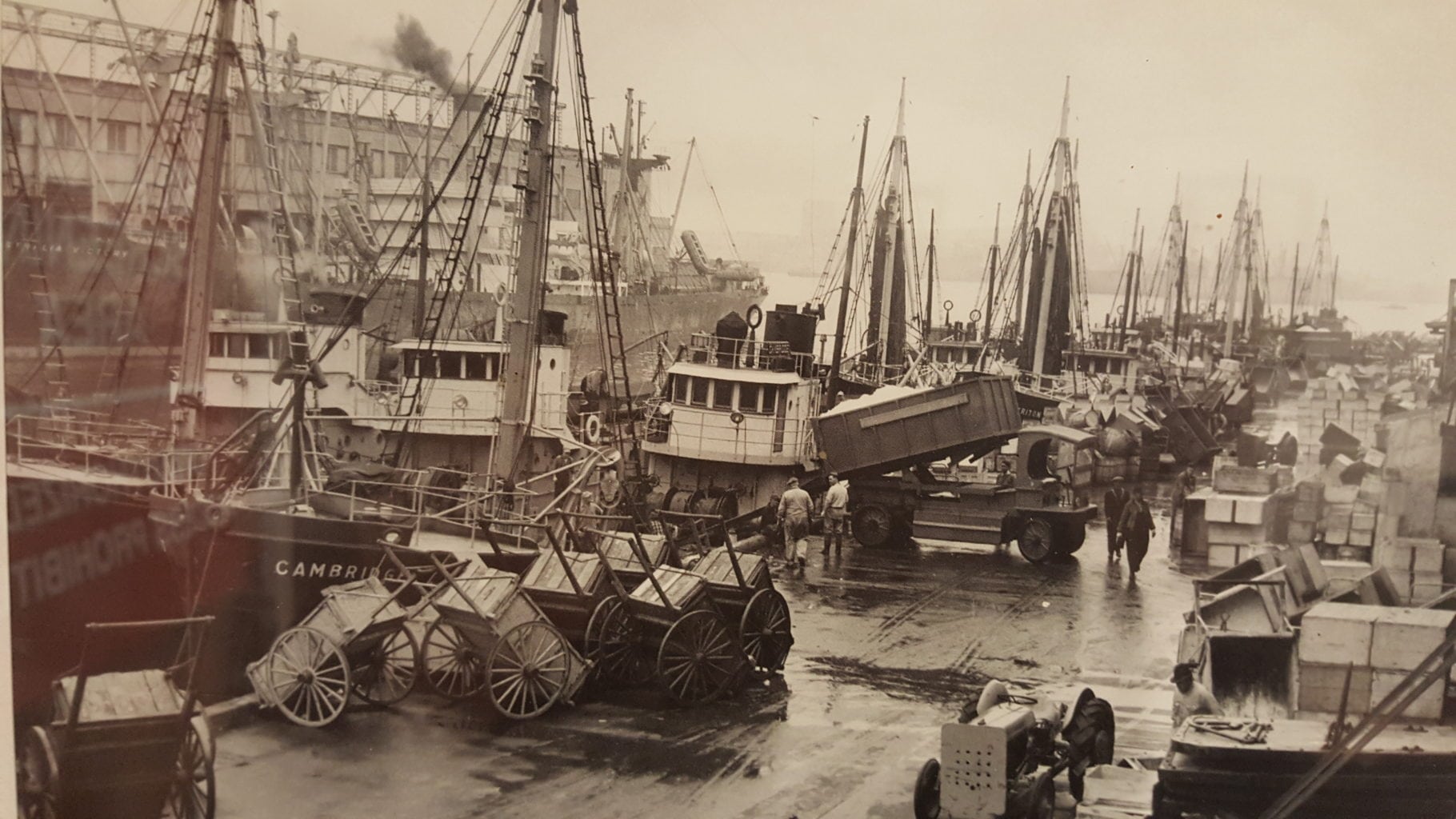
Photo Credit: Spinner Publications
It’s a winter morning in Boston, 1979. Jimmy Carter is President. Three Mile Island has had its melt down. Sony has just released the Walkman at the affordable price of $200 a piece. The Boston Celtics are shaking off their worst season since 1950 and the sun is not yet up. Boston’s dock workers, fish hooks on their shoulders and at the ready, begin to populate the various fish houses on the pier and along Atlantic and Northern Avenue. Fishing vessels are docked two to three boats deep, their decks overflowing with pollock, flounder and cod. The streets are lined with scallop trucks from New Bedford waiting patiently alongside tractor trailers down from Canada brimming with salmon, halibut, mackerel and swordfish. The halibut and mackerel are packed in heavy wooden crates. The swordfish are loose and loaded vertically like soldiers standing at attention buried in ice. Thirty-thousand pounds or more per trailer. Everything floor-loaded. Nothing on pallets. No pump jacks. No forklifts. No sweat. An eager dock worker stabs his hook into the tail of a swordfish. He pulls it free from the ice and drags it to the rear of the trailer. The first of many that day.
The movement of seafood through the port of Boston was once an arduous and time consuming endeavor. Truck drivers lucky enough to get a good spot along the fish pier’s catwalk-style loading dock usually stayed in that spot for most of the day. They made their deliveries by hand, stall to stall without much more than a fish hook and a two-wheel dolly. Local seafood producers out of New Bedford and Gloucester could plan on losing their truck and driver for the entirety of the day. It was commonplace for truckers to transfer freight back-to-back on the side of the road. But remember, everything was floor loaded. If your freight was behind someone else’s….you simply had to wait. Inconveniences like these were the norm. What was needed was a centralized consolidation facility where entire truckloads of freight could be off-loaded, separated and held until the outbound carriers arrived.
Jump ahead two short years to the summer of 1981. Reagan is now in office. Post-it notes are introduced by the 3M corporation. The word “Internet” is mentioned for the first time. Raiders of the Lost Ark hits theaters nationwide. And Boston’s first cross-dock transfer facilities make their debut. The $0.02 per pound tariff took a little getting used to, but was a small price to pay if it meant a mid-sized scalloping operation could make two or three return trips to Boston from New Bedford with the same truck. The same truck that was previously lost for the day on a single trip. Unsold inventory now had a place to be stored and distributed. Departure times for outbound carriers became more streamlined which meant delivery times on the other end became more predictable. Pallet jacks (at first manual and eventually electric) as well as fork trucks became a main feature in Boston’s cross-dock houses as the use of wooden pallets to transport seafood became ubiquitous.
LTL carriers were able to take full advantage of cross-dock services as they could now comfortably stage their freight and load their trailers for multi-stop trips. Seafood wholesalers in the northeast and trucking firms simultaneously expanded into other markets as far south as Florida and as far west as Colorado. Boston now boasts the strongest and most comprehensive LTL trucking network for seafood in the nation.
Boston’s cross-dock facilities have come a long way in the last 40 years. Gone are the days of the dark, damp, dingy, dungeon-like transfer stations. Gone are the moats of seafood swill…in which many a poor trucker has taken a dip after an unfortunate misstep departing their rig. One could say the transfer houses of old focused more on functionality rather than aesthetics. However the combination of stricter guidelines set forth by the Department of Public Health along with tougher, well financed competition have given rise to clean, bright, modernized facilities who compete with cutting edge technology and round the clock customer care and not simply rates and services alone.
The demand for fresh, high quality seafood continues to grow throughout the United States. So as long as people want to enjoy a cut of North Atlantic Halibut while dining in Kansas City, Boston’s cross-dock facilities will continue to thrive and refine themselves to meet the demands of the emerging domestic markets.
Header image credit: Spinner Publications



